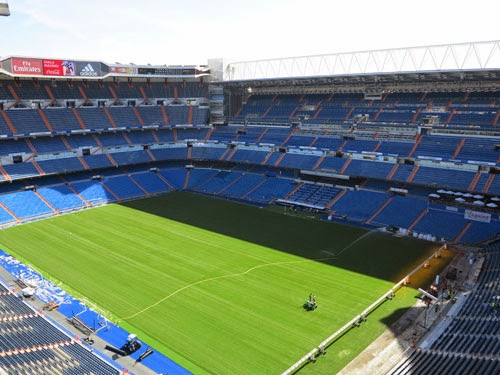San Siro, the most stunning of all Italian stadia, will be demolished
It was announced yesterday that the Stadio Giuseppe Meazza, to give it its proper name, will be rebuilt.
"Che Peccato!" - What a shame, I thought at once.
I remember making a pilgrimage just to see the awesome edifice when I first went to Milan in 1989 and was thrilled when I first caught sight of it.
I know I am not the only one in the world who makes a point of visiting stadia as part of a cultural tour of a city. There does not have to be a match on, I just want to admire from a close distance and imbibe the passion of the places' ghosts.
I suggest you visit San Siro too, but hurry - Internazionale and Milan plan to replace the 80,000 seater with a 60,000 capacity venue built alongside the existing stadium, as Tottenham did, over three years to minimize disruption to both clubs.
First built in 1925, San Siro's remodelling for Italia '90 left Milan with one of the most iconic grounds in world football.
Whilst there have been problems with the grass due to a lack of adequate light, the case for rebuilding is less clear beyond a desire by the owners for a multi-million Euro new castle and concomitant windfalls for developers.
The official documentation does a good job of dissing the current ground, but surely the reconstruction plans from the late 1980s spoke of how wonderful that new arena would be too.
A need for sustainability and the provision of adjoining green space is officially at the heart of Populous' The Cathedral design, which at first glance looks like a static throwback to 1960's modernism:
The competing proposal, The Rings of Milan by Manica, seems more in keeping with recent football stadia design and retains the old San Siro pitch as a green space as well.
In the wake of Atletico Madrid ditching their 55,000-seat Vicente Calderon stadium in southern Madrid in favour of the new 68,000 Metropolitano ground in the East of the city, Real Madrid are keen to get their long-planned and much-delayed new Bernabeu up and running at last.
Earlier this year the club announced it would go ahead with a remodelling of their 81,000-seat home at the end of this season - adding a sliding roof, a new facade and eating and drinking facilities, but interestingly no extra seats.
Barcelona had planned to inaugurate Norman Foster's 2007 design for a new Camp Nou with an increase from 99,00 to 105,000 capacity at a cost of around €250 million but the following year's financial crisis kaiboshed that plan.
Seven years later a similar plan returned, at a cost of over half a billion, for a roof over the currently open-air stands and an extra tier for a similar capacity as the Foster design with completion intended for 2024.
The architects this time are Japanese firm Nikken Sekkei, designers of the existing Niigata Big Swan stadium used in the 2002 World Cup, the Tokyo Dome (baseball) and Saitama Super Arena (indoor sports like ice hockey).
Like residents get attached to houses, football supporters cleave to stadia, no matter how tatty or decrepit, as repositories of emotional memory. When the wrecking ball comes it is natural to shed a tear.
Stadia are sometimes compared to places of worship and one of Milan's prospective designs is even called 'The Cathedral' to anoint its sanctity, although when built expect a soulless corporate moniker like The Coca-Cola Cathedral (God forbid).
Yet nobody in their right mind suggests demolishing churches unless they are literally falling down, rather restoring them to their former glory.
But even the twin towers of Wembley Stadium, aka the Cathedral of Football, were turned to dust in 2003.
While stadia remain icons of this religion we adhere to, football's directors feel no qualms in swapping our hallowed grounds for new idols every 30 years or so
 |
| Real Madrid's Bernabeu Stadium |
(c) Sean O'Conor & Soccerphile
